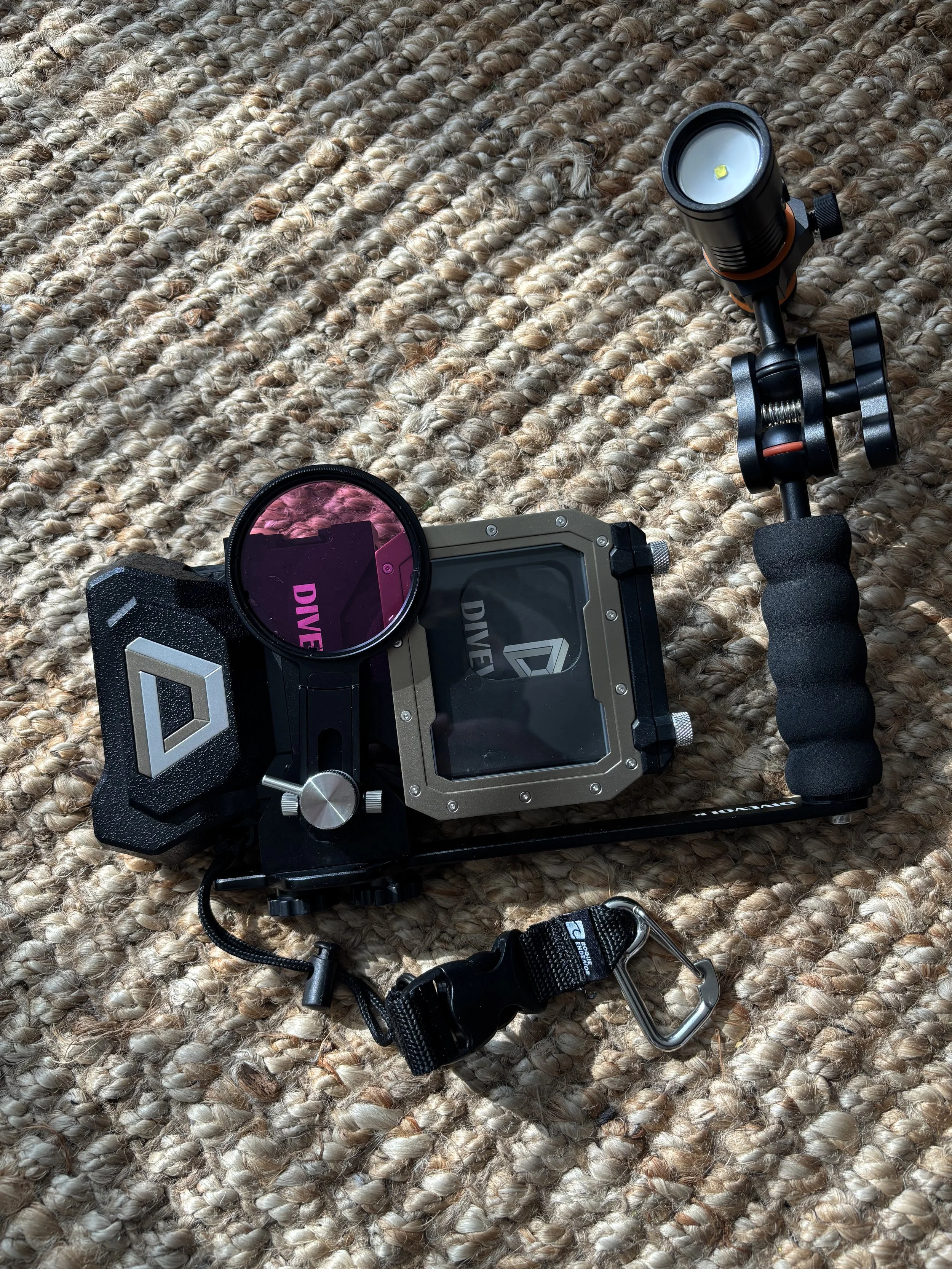My DiveVolk Underwater Video Dive Rig
When I started building out my dive rig, I wasn’t trying to create a professional underwater camera system—I just wanted something simple, reliable, and easy to use. I mostly shoot video, not macro photography, so I didn’t need strobes or complex lighting setups. What I did want was a rig that could handle deeper dives, low-light conditions, and still be streamlined enough to not get in the way. That led me to a setup I’ve been really happy with: an OrcaTorch mounted on a DIVEOLK Single Handle Tray, housed in a DIVEOLK case. I’ve taken it down to 108 feet, and it’s performed exactly how I hoped.
The OrcaTorch DV530V 1200 Lumen provides solid brightness without being overkill. It’s great for illuminating reef structure, wrecks, and general navigation. I’m not chasing tiny critters or trying to light up macro scenes, so I don’t need pinpoint control - I just need consistent, wide coverage, and this light delivers. It’s rugged, dependable, and hasn’t let me down in saltwater or freshwater.
The DIVEOLK handle and mount make the rig easy to manage underwater. The grip feels natural, even with gloves, and the mount keeps the torch locked in place. I like that it’s modular—I can reposition the light or swap components depending on the dive. It’s not bulky, and it doesn’t interfere with buoyancy or movement. It’s just there when I need it, which is exactly what I was going for.
One of the biggest reasons I built this rig was to shoot video on my iPhone. I’ll admit, I was hesitant to bring my primary phone underwater, especially to depth. But after multiple dives, I haven’t had any issues with flooding or even minor leakage. The DIVEOLK housing has held up well, and I appreciate that it comes with interchangeable inserts for different phone sizes—my iPhone 17 Plus fits perfectly. The housing also includes color correction filters: a red filter for blue, clear saltwater and a magenta filter for green water. That, combined with the iPhone’s built-in ability to auto-correct color at depth, has made post-dive editing almost unnecessary.
I should also mention that the spongy screen separating your phone from the unforgiving pressures of the sea seemed too good to be true. You’re saying I can actively use my phone hundreds of feet below the surface? The answer is yes - myself and others who also have the case have had no issues with leaking to date. Just be sure you’re careful to protect the screen section of the case during travel and on the boat when gear is being tossed and everything is feet and elbows.
I’ve used GoPros in the past and found them underwhelming for my style of diving. The footage was fine, but the experience felt clunky. With the iPhone, I get better image quality and a smoother process overall. No transferring files, no extra batteries—just shoot, surface, and review. For me, that simplicity is a huge win.
This rig isn’t perfect, and it’s not meant for every kind of dive, but for what I do—shooting video, diving in varied environments, and keeping things simple—it’s been a great fit.



